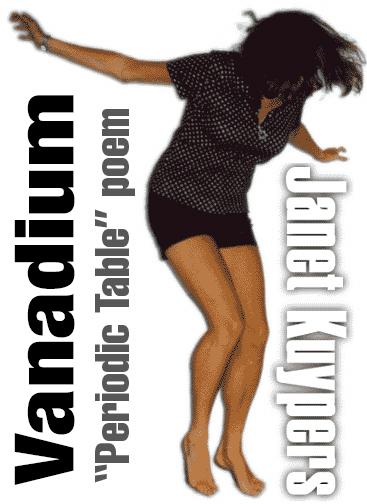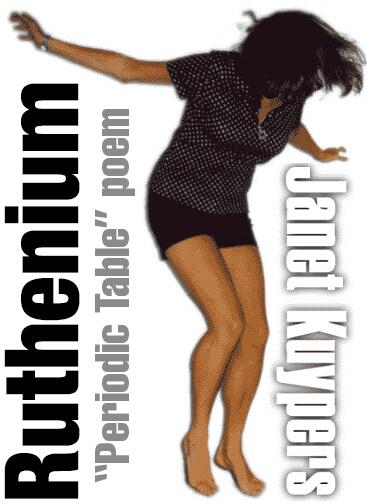Seaborgium
Janet Kuypers

from the “Periodic Table of Poetry” series (#105, Sg)
7/28/14 (started 7/27/14)
I’ve always loved the sea.
When standing at these Pacific shores
I’m always intoxicated by the action there,
at the vibrancy, the sense of life.
I’ve always been drawn to the idea of learning,
to California’s desire to explore and discover.
#
There was a scientist, Glenn Seaborg,
who later worked through U of C Berkeley.
And when it comes to discovery in California,
Seaborg really had a hold on the chemistry market.
Because during his career, he did theoretical work
in the development of the Actinide series
in the Periodic Table, and he even helped discover
ten elements (many in that Actinide series).
But one element that wasn’t in the Actinides series
that he helped discover, element one oh six,
that was the element people petitioned
to be named after him (you know, because
of all he had discovered for the Periodic Table).
But scientists in Dubna Russia were also wanting
to claim the naming rights for element one oh six,
and naming this element after Seaborg
caused quite a stir, because elements
are only named after dead people, they said.
But the Americans actually pulled it off
and got the new element named Seaborgium.
Transuranium elements like Seaborgium
are only artificially made with particle accelerators,
and I know those scientists,
after finding elements that way
only acquire one or two atoms,
and they can only guess the element’s properties
by their location on the Periodic Table…
I mean, Seaborgium’s isotopes
have half lives only seconds long,
and there’s no use we know of for Seaborgium
other than scientific research
(like for scientists like Seaborg or Albert Ghiorso,
or the leader of that Seaborgium discovery team).
But after the element was named Seaborgium,
and since Seaborgium is the only element
named after a living person,
it may have been possible
to send Glenn Seaborg a letter
addressed in chemical elements:
send it to Seaborgium,
in lawrencium (for his Lawrence Berkeley Lab),
in the city berkelium,
in the state californium,
and
(if the letter’s being mailed
from outside the U.S.)
in the country americium…
I don’t know if any letters like this
actually got through to him,
but for a man with that many
discoveries under his belt,
sending letters to him
using only Periodic Table elements
almost seems like icing on the cake.




